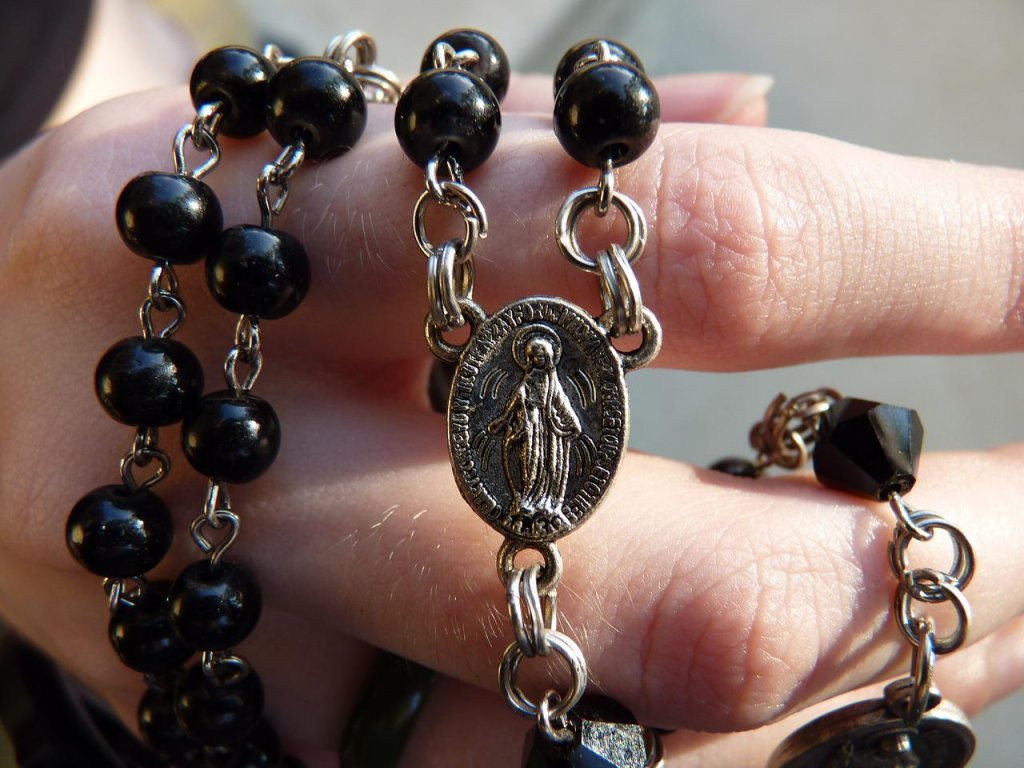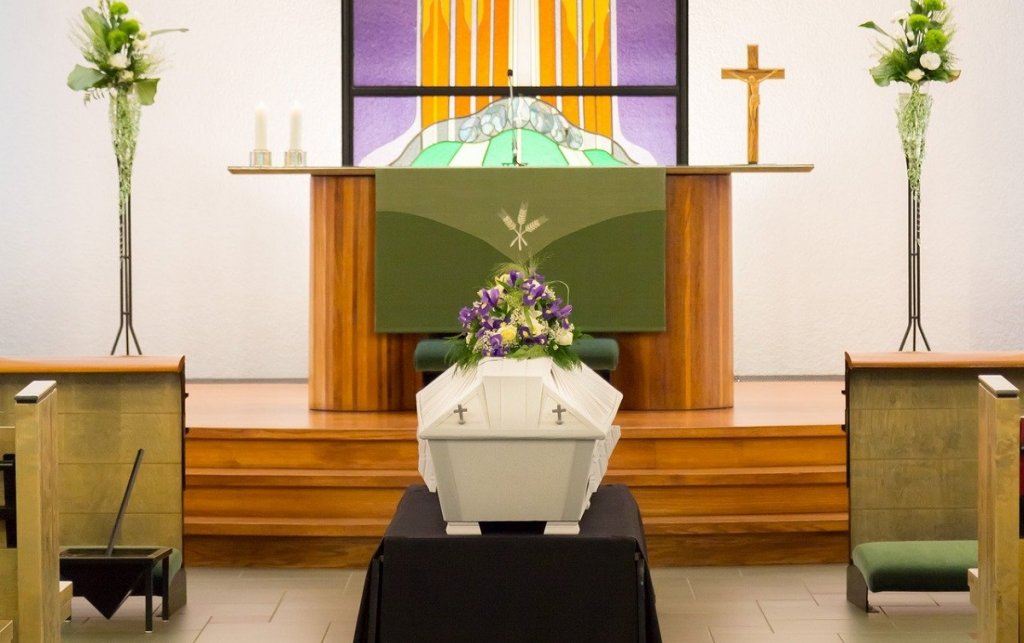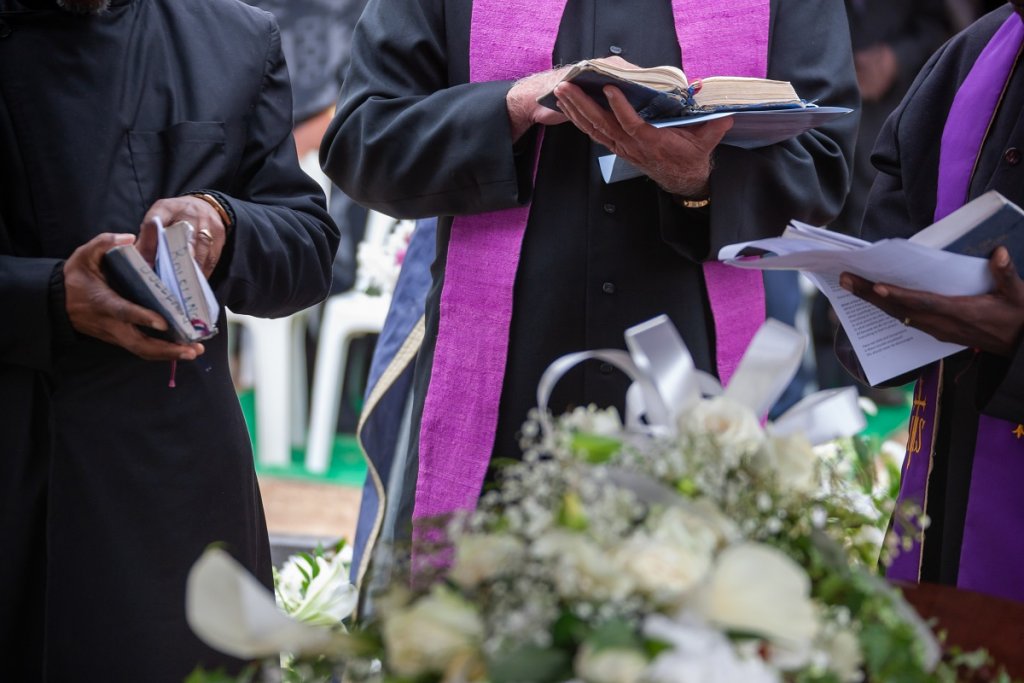As Christians who look to the Pope as the authority on God’s teaching, Roman Catholics believe that death leads to judgment and assignment to Heaven, Hell, or the intermediate destination Purgatory, As they have no assurance they will go to heaven, mourners at Catholic funerals pray for the deceased they will gain entrance to heaven through God’s mercy.
Catholics are Christians whose faith is based on the belief in one merciful God who will judge the dead and take the souls of the righteous to heaven. Eventually, the bodies of the departed will be resurrected and joined with their souls for all eternity.
They differ from other sects as they recognize the Pope and Vatican as the authority and representation of God’s teachings on earth.
Regardless of your own religious beliefs, it is important to have some background knowledge of the customs prior to going to a visitation, funeral, wake, or burial of someone with Catholics or any beliefs different from your own. Knowing what to expect, when it will happen, and how to act can help save you potential embarrassment. It can also help the grieving family because the last thing they need to deal with in their time of need are questions.

Table of Contents
What is The Catholic Attitude Toward Death?
Catholics do not believe that things end when your physical life ends. Rather, Catholics believe that followers of the faith spend eternity with Christ in heaven. As you lay your loved one to rest, this can be a comforting thought.
Upon death, people face the particular judgment, where their eternal fate is determined. They may be given entrance to heaven for all eternity or sentenced to eternal hell. They may also be sent to Purgatory for additional purification before they can access heaven.
This belief in Purgatory, which separates Catholics from other Christina sects, leads Catholics to pray for the dead so that their time in Purgatory is short.
The faith, and Catholics’ attitudes toward death, are based on John 11:25-26:
“I am the resurrection and the life. Those who believe in me, even though they die, will live, and everyone who lives and believes in me will never die.”
At the end of time, Jesus will return, and bodies and souls will be resurrected and joined for all eternity.
Can Moderns Catholics Be Cremated With The Church’s Blessing?
Although at one time cremation was taboo, now Catholics can be cremated with the church’s blessing. The Catholic funeral rights do not change much if the person is cremated. Instead of a body in a casket, you might see an urn or box containing the ashes of the deceased. One thing that has not changed is that the remains must be buried, even after the cremation.
Can Anyone Have A Catholic Funeral?
Catholic funerals are available to anyone baptized Catholic, even if they are “lapsed” or not practicing the faith. Even those not Catholic in life may have a Catholic funeral service if they are baptized Christians.
The church offers this option, which can be a consolation to family members who are practicing Catholics and loses a loved one who is of another faith or currently “unchurched.” For someone who is unbaptized, the priest may say prayers over the deceased at a funeral home but may not be able to offer a funeral Mass.

How Are Funeral Rites Laid Out?
- Last Rites: The Catholic funeral process starts when the person is still alive but believed to be near the end of life in a physical sense. When a person is sick or injured, it is common for a priest to be brought to the home to issue last rites.
First, the priest makes the sign of the cross, followed by confession or Act of Contrition. The baptismal promise is renewed, and the person is anointed with holy oil and offered holy communion if they are able to have it. - Wake Service: In the Catholic faith, the family contacts a funeral home very quickly upon someone’s passing. The wake service typically occurs within a couple of days after the body is embalmed to preserve the body so that your loved one looks as “normal” as possible for visitation.
Someone close to the deceased will give a eulogy at the wake service, although someone may do so during the funeral service. You should also not be surprised if family members are praying the rosary between greeting guests or at some time during the wake. - Funeral Service: Although the Catholic funeral service can be an entire funeral Mass, it does not have to be. Based on Catholic funeral traditions, the service usually occurs at a Catholic church. At the service, guests are offered communion, but only practicing Catholics should accept.
- Burial: Another part of this Christian funeral involves the burial, which often takes place at a Catholic cemetery. The family accompanies the priest and deceased to the final resting place, whether that is a burial site, mausoleum, tomb, etc. The priest offers final gravesite prayers, and in the final commendation, he commends the deceased into the hands of the Lord.
- Reception: After the graveside service, it is common to have a reception where either light snacks or a meal is served, depending on the time of day. In the Catholic Church (as well as other faiths), the extended church family will often pitch in and help by bringing food, setting and cleaning up, and serving at this meal.

Catholic Burial Customs
Knowing how the funeral is organized and the important funeral etiquette required will help you navigate a Catholic funeral.
- Flowers: Sending flowers to the funeral home or church is a lovely gesture and very common in Catholic funerals.
- Gift: Although flowers are very often sent, sending other types of gifts has increased in popularity in recent years. There are many thoughtful gifts you can send, such as wind chimes, plaques, photo frames, and other items.
- Burial vs. Cremation: Up until 1963, the church held a firm stance against cremation. However, the Vatican made a proclamation changing this.
- Burial Site: According to canon law, each person gets to choose their own burial site, so burial in a Catholic cemetery is no longer required.
In the past, the church denied Christian burial to someone who has taken their own life or was unbaptized. The church no longer states that suicide is an impediment to Christian burial and has renounced the idea that if an infant passes away before baptism, the child will spend eternity in limbo. - Wake: The wake, also called a vigil service, a viewing, or a visitation, is usually held within a day or two of the person dying. It can be held in a family home, funeral home, church, or other site.
- Burial Ritual: In the Catholic church, the burial is typically reserved for close friends and family members.
- Visitation of the Body: As with any funeral planning, the family needs to discuss visitation of the body. Catholic tradition typically has open visitation for friends, colleagues, and neighbors to visit the deceased, in addition to the expected family members.
- Dress Code: People attending a Catholic funeral should wear black, navy, brown, or gray, which are accepted somber colors of mourning. Unless the family requests, avoid bright colors.
- Format of the Service: Catholicism is steeped in tradition, and the order of Christian funerals is no exception. You can find more details regarding this in the next section.
- Organ Donation: Although for years, people said that organ donation went against the teaching of the Catholic Church, that is not accurate. The church looks at organ donation as an act of love.
- Mourning Period: Traditionally, the Catholic Church dictated clear periods of mourning that are not often held to today. During the mourning period, the bereaved wore black or other dark colors in public and avoided fun social situations.
Grief and mourning are personal, but the guidelines are:
Spouse: A year and a day in mourning is considered the norm, with 30 and one-half days of “heavy mourning” followed by “light mourning” for the rest of the time. The bereaved spouse should avoid initiating or receiving attention from the opposite sex.
Parents and children: Six months in mourning, with the first 30 days of heavy mourning, are considered proper.
Grandparents and siblings: Three months in mourning.
Other family members: 30 days in mourning.

What Is The Order Of Service At A Catholic Funeral?
- Introductory Rite: This is a greeting offered by the priest.
- Procession of the priest and Mass servers (who used to be called altar boys, but now can be girls too.) Sometimes the casket is brought up at this time.
- Blessing of the Casket: During the blessing, the casket is sprinkled with holy water.
- Opening Songs and Prayers
- Scripture Readings
- Homily: The homily usually includes some discussion of the life of the deceased and how to deal with grief.
- Holy Communion is offered to Catholics. Because Catholics believe that the eucharist becomes the body of Christ, non-catholic guests should not partake.
- Final Commendation: This part can be done at church or later at the cemetery.
- The Casket is now removed to the hearse for the procession to the cemetery.
- Final Committal at the cemetery.
Still have questions about a Catholic wake, funeral, or burial and what proper etiquette is for them? A simple call to any Catholic church might prove helpful to you. Above all else, don’t hesitate to step outside of your comfort zone to comfort your grieving friend. You won’t be sorry you did.

